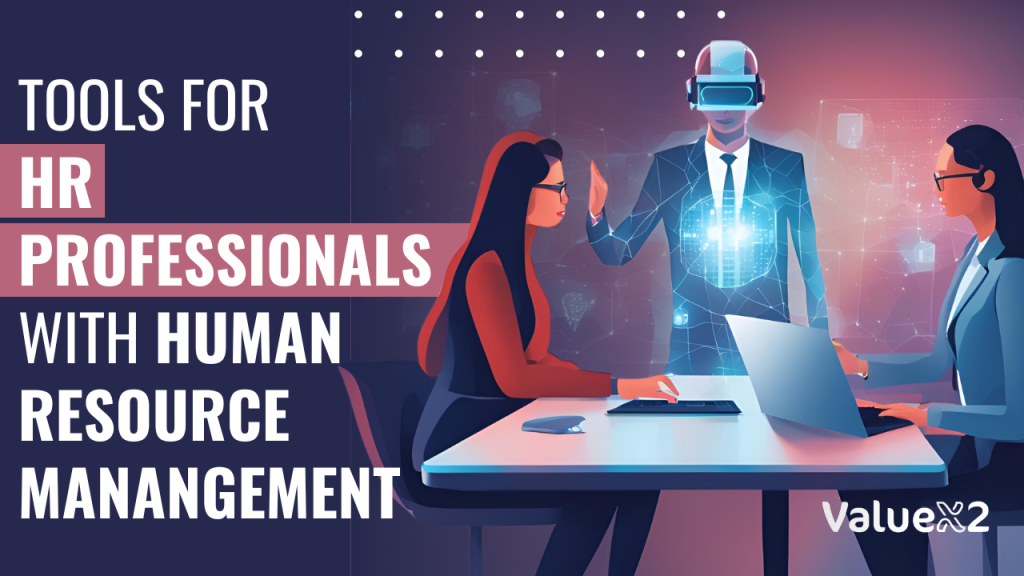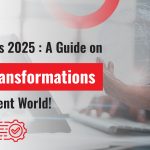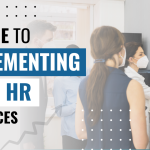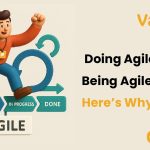Here’s the list of best AI tools that HR professionals can utilize to streamline and scale HR management.

Today more than ever, HRM is transforming, and its use of AI tools is proving to be a game-changer for HR specialists. Right from pre-employment testing to interviewing, promotion, and retention an AI-powered HRM toolkit is progressively becoming an indispensable tool. This article covers some of the most useful AI tools for transforming HR operations with their advantage and the correlation with adaptive software development and Agile.
1. Pymetrics
Pymetrics uses neuroscience games and further AI to help to select proper candidates and positions. In that way, it guarantees more accurate results in the selection process by evaluating cognitive and emotional characteristics. The games are structured to test an individual’s innate attributes since the regular hiring processes are filled with biases. Employers use these games to generate data that the AI processes to determine job performance and individuals’ suitability to certain organizations.
This generally makes the tool capable of adaptive software development since its algorithms are or can be refined depending on new data. Each of the contact experiences and results is incorporated into the assessment criteria, which are refined over time to improve the instrument’s reliability. This way of improvement is also closely related to the usage of the agile methodology because the latter perfectly matches the idea of constant feedback and changes. For a deeper dive into how AI can drive continuous learning and growth, check out our Framework for L&D Revolution with AI and Agile.
2. HireVue
Selection is done using DVD interviewing together with HireVue and other predictive technologies. This is because it improves the recruitment procedure by pointing out at possible compatibility of a specific candidate with the organizational culture. HireVue has additional matrices of how a candidate looks, what they say, and even how they say it all during interviews with HireVue’s AI compared to traditional interviews.
This tool fits SHRM because it helps in determining the employment of individuals in an organization in a strategic and informed manner. As such, HireVue provides more efficient solutions compared with traditional interviews by cutting down the time and every bias that interferes in the process; thus, it enables the HR managers to make the right decision, which will be ultimately beneficial for the company. Additionally, its capability of integrating with other HR instruments could enhance the efficient flow during hiring.
3. Hiretual
Hiretual is an artificial intelligence-based sourcing tool that aids HR managers in recruiting the best candidates. It interfaces with other platforms like LinkedIn, Git Hub and others in the recruitment of these staff efficiently and effectively. With Hiretual, a company’s HR department can sift through millions of profiles to find the right talent for a particular job and match them on skills and experience as well as the overall organizational culture.
With Hiretual, routine activities that include first call-outs and messages are accomplished which enhances agility in methodologies. That way, HR can stay more focused and execute tasks that are key to the organization’s success such as crafting employer branding strategies and revamping the candidate experience. The analysis shows that the tool operates at a high level of adaptability, hence it remains relevant to the dynamic world of employment.
4. Eightfold.ai
Eightfold.ai applies AI to deliver bespoke services when it comes to the career advancement of clients and talent acquisition and management. This tool maps out their abilities along with their probable area of work, thus helping the SHRM by matching the growth with the organization’s objectives. Eightfold’s AI uses performance reviews, skills, appraisal, and other sources to provide career suggestions to the employees.
The capability of this tool to be adaptive guarantees it changes with the ever-dynamic workforce demographics. For instance, if some new skill emerges as significant or the organization’s requirements change, Eightfold’s AI can adapt its suggestions. This constant adjustment reflects the process of the agile approach, which emphasizes the efficient and responsive form of talent management.
5. Textio
Textio is an augmented writing tool that augments job posts making recommendations on how language can be written to attract a diverse talent population. It defines sources of prejudice in terms and provides suggestions to eliminate such prejudice in describing jobs to attract talent. This in a way helps organizations to actively search for a more diverse talent pool thus encouraging diversity and inclusion.
Through a machine learning algorithm, Textio assists strategic HR management through proper categorization of the job descriptions according to the company’s diversity and inclusion aims and objectives. The tool’s ability to adapt to new information and commands arising from the perceived performance of jobs posted in accordance with adaptive software development. It is for this reason that there is always a constant refining process to ensure that the job descriptions are useful and up to the task of attracting the best talents.
6. Talla
Talla offers intelligent HR bot services which are used in the organization to respond to employee questions and facilitate the completion of HR tasks. Since this tool minimizes the amount of time that HR professionals spend on performing mundane tasks, this tool boosts efficiency in operations. The beauty of Talla’s AI is that it is capable of answering virtually any form of question, from policy-related details to benefits queries to give information conclusively in real-time.
Here, one can note that by managing these tasks, Talla frees up the time of human resources specialists for such activities as manpower training, employee retention, etc. The tool that is integrated with other systems applied into HR and that can learn from the interaction is one more characteristic of agile methodology. This makes the functions of HR more flexible and sensitive to organizational requirements in a given period to ensure the tool meets the requirements.
7. Lattice
Lattice concentrates itself on performance management, so it can assist companies in connecting goals from the workers to those of the business organization. It feeds its clients with AI-based recommendations for day-to-day feedback and performance evaluation which are critical to effective SHRM. Lattice has tools that include goal-setting functionality, reviews, and feedback, all aimed at organizational development.
In our case, Lattice assists HR professionals in offering valuable information on performance and further engagement of the employees alongside underlining the weak traits and shining talents of the workers. This is useful when it comes to strategic HR management since one is assured that employee development is in synch with the organizational hopefuls. Given that the tool we are describing aims at providing feedback and adapting to users’ needs on an ongoing basis, it can be considered as practising adaptive software development and, more broadly, agile methodologies.
8. Gloat
Gloat is an internal talent marketplace platform using UI that assists employees in discovering new roles in their company. The discussed concept also covers career enhancement, which is one of the essential elements of SHRM. It uses AI to recommend projects and positions to its users based on their expertise, preferences, and career progression thereby boosting internal transfer.
This tool developed with a dynamic matching algorithm assures that it can be adjusted in a way that corresponds to changes in the employees and organization. Since Gloat is designed to enhance internal talent mobility, talent management is enhanced, and future employees are developed. This optimizes its susceptibility to being developed under the most responsive format that is associated with the agility concept in methodology.
9. Beamery
Beamery is a SaaS talent engagement solution for businesses focused on talent acquisition and management for employment and recruitment. It employs data to find and develop talents before a particular job is vacant. Such solutions as Beamery utilize artificial intelligence to interpret numerous factors that influence the candidate’s actions and preferences, which helps create a better rapport with potential employees for HR specialists.
It helps in the strategic management of Human Resources through the organization’s ability to act proactively on talent management and recruitment. Since Beamery focuses on the long-term management of candidates, the tool allows organizations to create a strong talent pool. It means that the work of the system reflects such values as adaptive software development and agile approach, as it seems to adapt to the changes in the market and the candidate’s needs.
10. Humu
Humu is an AI-based application for managers that helps engage employees and boost their productivity through gentle reminders. These are small, practical micro-messages designed to assist bosses and their subordinates in changing their working habits and patterns. Humu’s AI takes insights from qual and quant feedback forms, access to other performance indicators, and uses them to provide behavioural prompts targeted for the employee’s and the organization’s performance targets.
Thus, through positive behaviour change, Humu aligns well with the management of human resources and the development of employees. Their feedback process guarantees that the tool is relevant and useful as it follows the ethos of the agile method. The adaptation of Humu’s recommendations according to further collected data also fits into the idea of adaptive SD, as it continuously improves in response to the employees.
You can also check out this guide for a different perspective.
The Importance of AI in HRM
AI and its applications in the environment of HRM are revolutionizing HR’s techniques for recruitment, employee engagement, and even performance management. These tools offer several key benefits:
- Enhanced Efficiency: In this way, the HR specialists do not have to waste time on routine activities and stay engaged in more crucial processes. The means make overall functioning more efficient and enable the HR teams to provide more value to the organization.
- Improved Decision Making: Thus, through generating data on business-related aspects AI assists HR professionals in making the right decisions. This results in enhanced hiring efficacy, optimal means of managing the employees, and optimum level of employee involvement.
- Bias Reduction: Bias in recruitment and talent management is another area that can benefit from the application of AI as it eliminates subjectivity and works on facts. This helps in providing equal and different opportunities within organizations.
- Strategic Alignment: There is compliance in HR management by integrating AI tools to execute strategic HRM as per the organization’s plans. HR initiatives are aligned with the needs of the company to make sure that they enhance the achievement of the company’s strategic goals in the long run.
- Continuous Improvement: Various tools involved here in AI fall under the practice of adaptive software development, where they are constantly trained with new data to enhance on. This ensures that they are up-to-date in the ever-changing HR environment and use the most effective techniques.
Embracing Adaptive Software Development and Agile Methodology
Adaptive software development and Agile methodology play a vital role in AI tools making in the field of HRM. They incorporate the principles of improvement, adaptability, and the ability to respond to future changes like workforce and organizations to require AI tools.
Adaptive Software Development: In this case, the approach that is taken is one of constant learning and enhancement of educational processes. Adaptive software development methodologies that are employed in the development of AI tools make it possible for the algorithms as well as other features in the tool to be modified as new information becomes available.
Agile Methodology: Regarding the methodologies applied, it is important to indicate that agile’s features include iterative progress, flexibility, and specific responsiveness. Since the usage of AI tools within Human Capital Management is based on agile principles, their application can easily evolve in response to changes in the job market, the organization, and its employees. Thus, the external conditions have to always remain responsive to warrant the efficiency of the practices in the HR field.
Role of Value X2 in Agile
Value X2 offers a diverse range of courses that enhance knowledge in Scrum, Kanban, Implementation and benefits of Agile in HR, IC Agile, SAFe, and more. These courses equip professionals with practical skills and insights to implement agile methodologies effectively, driving organizational efficiency and continuous improvement
Frequently Asked Questions
Q1: How are AI tools revolutionizing HR practices?
AI tools are transforming HR practices by enhancing how HR professionals engage with employees, and how they attract, select, and promote talent. These tools improve the efficiency and effectiveness of HR functions, making processes more streamlined and data-driven.
Q2: What is the role of AI tools in Strategic Human Resource Management (SHRM)?
AI tools play a crucial role in SHRM by aligning HR practices with organizational goals, This alignment ensures that HR activities support the overall strategy of the organization, contributing to improved performance and competitive advantage.
Q3: How do adaptive development and agile methodologies contribute to the effectiveness of AI tools in HRM?
Adaptive development and agile methodologies allow AI tools to be continuously refined and updated, ensuring they can meet the changing needs of the workforce, also These methodologies enable AI tools to remain flexible and responsive, adapting to new challenges and opportunities in HR management.
Q4: Why are AI tools considered valuable in the context of a dynamic workforce?
AI tools are valuable because they are designed to be adaptive and responsive to the ever-changing dynamics of the workforce. By utilizing adaptive development and agile methodologies, these tools can evolve to meet new demands, ensuring HR practices remain relevant and effective in a rapidly changing environment.
Conclusion
AI tools in HRM are revolutionizing the practice in a way that HR professionals engage with the employees and how they attract, select and promote them. These also improve the efficiency and efficacy of the human resource functions while promoting the concept of strategic human resource management because of the alignment of the human resource management practices to the organizational goals. Thus, the AI tools in strategic HRM are valuable because they are adaptive; given the method of software development known as adaptive development as well as agile methodologies, they can continuously be refined to meet the dynamic world of the workforce.

Sagar is an HR Agile Coach & Business Agility Consultant with 15+ years of experience in HR functions at small and large multinational corporations. He has been running an HR consulting firm for the last few years, focusing on leveraging agile methods to increase business efficiency.
Sagar is an authorized instructor for ICAgile Agility in HR (ICP-AHR) and Business Agility Foundations (ICP – BAF) training courses. He has considerable experience in coaching and training on applying agile practices for his clients, primarily HR departments. He also provides consulting for HR for Agile and Agile for HR transformation to corporates.






